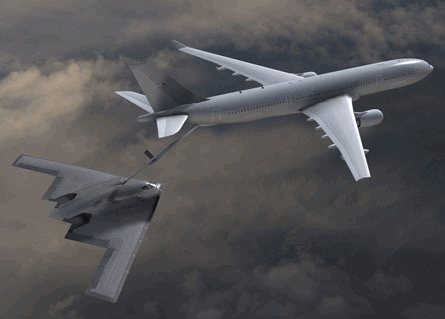The Department of Defense has adjusted the pricing strategy on the controversial US Air Force KC-X tanker contract to shift more risk to the government. The mostly technical changes in the final request for proposals seem unlikely to persuade the Northrop Grumman/EADS North America team to compete, however.
Northrop's congressional supporters, such as Senator Richard Shelby of Alabama, immediately attacked the DoD's acquisition strategy. Shelby says the document "discredits the integrity of the entire process".
Although Boeing expressed "disappointment" because the RFP does not address subsidy issues, the company's congressional supporters heartily endorsed the terms for the third round of bidding of the long-delayed KC-X contract. "Some European airplane company isn't very happy," says Senator Pat Roberts of Kansas. "Tough for them. Good for us."
 |
|---|
© Northrop GrummanNorthrop originally won the KC-X tanker contract in February 2008 with the KC-45, a modified Airbus A330. But the contract award was overturned on a technicality |
Northrop says it is evaluating the RFP and will "defer public comments" about its intentions until the review is complete. The company has the option to not submit a bid. That would leave Boeing as the only bidder for a $35 billion programme to supply 179 tankers over the next 18 years.
The Northrop team won the contract in February 2008 with the KC-45, an Airbus A330 modified as a tanker-transport. But the contract award was overturned on a technicality.
Last year, the DoD came up with a new method to evaluate the contractors' proposals. A list of 37 mandatory requirements called for under the previous competition has swelled to 372. The extra clarity is necessary because the Pentagon has shifted the contract to a fixed-price structure, which precludes the US Air Force from adding requirements during the development stage.
The bidders' lifecycle cost proposals will be weighted against a "warfighting effectiveness" simulation, with pricing adjustments given for demonstrating greater performance. For this reason, it is possible the lowest-priced bidder can lose the competition, according to DoD officials.
Since releasing the draft RFP on 25 September, the DoD has adjusted the fixed-price structure. During the development phase, cost overruns of up to 25% will be split between government and contractor using a 60:40 ratio, with the contractor assuming all risk beyond a 25% overrun. The DoD also assumed the risk of cost overruns caused by runaway inflation over the period of development and production.
Source: Flight International























